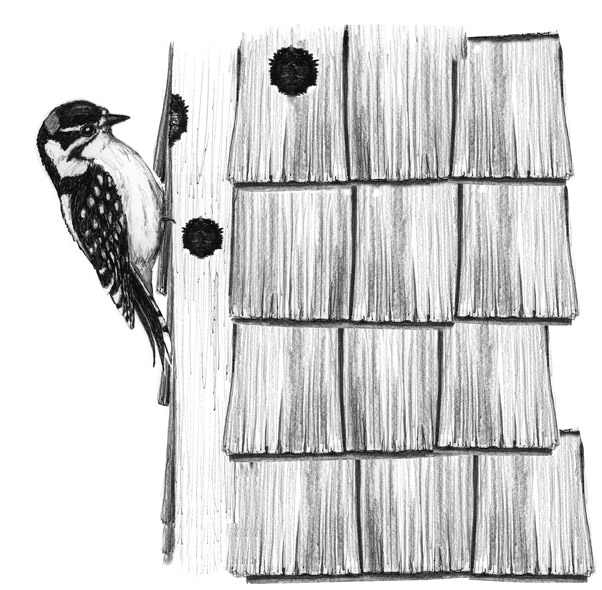
Fall, sweet fall,
I think if some researcher made a list of topics that people argue about the most, choosing the best season of the year probably wouldn’t make the top ten, or even the top twenty. Undoubtedly, religion, politics, sports and which way to hang toilet paper off the holder are far more important topics to fight about. Because when it comes to discussing the seasons, things are pretty straightforward. Skiers and snowboarders love the winter, gardeners enjoy the spring, beach goers worship the summer’s sun and most Cape Codders look forward to the fall. October is when our weather becomes refreshing, the restaurants are no longer packed and we are finally able to participate in the long-lost art of making left-hand turns. Fall is also a time of change for the birds. (You knew I would get to birds eventually.) Here are several fall topics combined into a single column, a column that can be saved and stored away for future reference. I keep my favorite bird columns under my pillow, which doesn’t make my wife happy (but I’ll bet she secretly reads them after I fall asleep).
The most obvious change in October is that the orioles and hummingbirds have stopped coming to our feeders. Even the enchanting catbirds will be disappearing soon and the goldfinches will stop being gold. People regularly inquire about when to take down their hummingbird feeders. By mid-September “our” hummingbirds are long gone, but we could still see a few late stragglers migrating down from Maine or Canada. So leaving your feeders up for a few more weeks wouldn’t hurt. Although there is a downside associated with keeping your feeders out for too long. What is this downside, you ask? Could it be that our feeders prevent birds from migrating? Nope, that isn’t it. Hummingbirds are programmed to fly south, regardless of how many feeders we have in our yards. But sometimes a lost bird, usually from the western part of North America, will mistakenly fly east and when that happens, the confused bird may become attached to a feeder. Being lost is not only bad news for the bird, but it’s also bad news for the feeder’s owner. Once the word gets out that a rare hummingbird is in the area, the person’s yard will be inundated with carloads of creepy birders and that’s never a good thing.
Speaking of “never a good thing,” a successful woodpecker breeding season means that thousands of young woodies will be looking for a place to spend the winter. After hearing about last winter, there is no way these newbies want to spend this year sleeping outside, so they dig out little cavities to roost in. Usually, these roosting cavities are dug into the trunks of dead trees. But occasionally (actually, I think it’s a lot more than occasionally), a woodpecker will shun the tree and instead dig a hole into the side of someone’s home. And more often than not, this little home invader is a cute Downy Woodpecker. But the bird’s cuteness can’t save it from the wrath of the homeowner, who, more often than not, doesn’t want a new hole in the house. The homeowner then comes complaining to me, because as everyone knows, I’m responsible for all bird behavior, everywhere.
Here are two suggestions that we find are the most effective at stopping woodpecker attacks. First, if there is any damage, fix it immediately, even if the fix is only temporary. Woodpeckers love holes and are attracted to them almost as quickly as Volkswagen executives are attracted to scamming the public. Next, get out your ladder and tack up strips of reflective scare tape over the affected area. The shiny tape is cheap (much cheaper than those worthless plastic owls) and usually does the trick. Of course, a house covered in sparkly streamers will look like a float in the Mardi Gras parade, but what’s wrong with that?
While we are talking about work that requires the use of a ladder, fall is a good time to clean out your birdhouses. I know next spring is a long way off, but the weather is nice now, so why not get the job done? Remember, birds often start exploring for nest sites in March and in case you forgot, we couldn’t even get near our birdhouses last March. BTW: I suggest that you wear rubber gloves when cleaning out your boxes. Last July I cleaned out my Tree Swallow house and neglected to follow my own advice. The swallows’ nest was infested with lice, and soon so was I. I had to take a shower…and it wasn’t even the end of the month.
Here’s something else that I hear every fall: “Why have the Blue Jays suddenly become super pigs?” Blue Jays, which aren’t known for being shy, really crank it up in October. It’s not that the jays have suddenly switched to a high caloric diet; they are eating the same amount as usual. However, most of the seed they are scooping up is actually stashed away for the coming winter. So, before you start cursing at the jays, you should understand the reason they are being such pigs…then you can curse at them all you want.
While fall is my favorite season, it’s a little sad to see the hummingbirds and orioles leave us, and in a few weeks the catbirds will be gone, too. But there is some good news to report. Soon the Common Grackle, aka “those darn blackbirds” will also be heading south. That should put a smile on just about everybody’s face, including my wife’s. She’ll learn about this good news when she reads this column tonight, after I fall asleep.